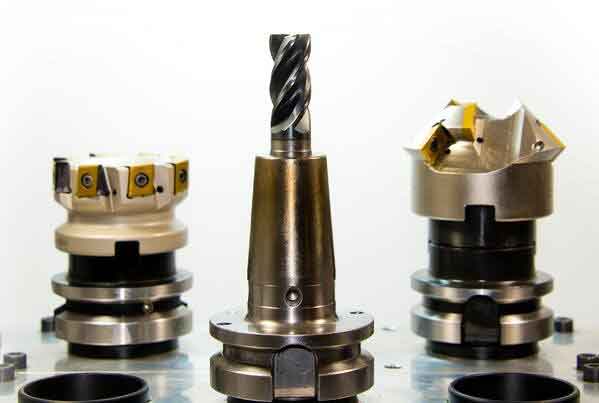The first milling machines were based on the practice of rotary filing. A process which evolved in countless machine shops around the world, rotary filing reduced the time and energy previously spent on hand-filing by placing a circular cutter lined with teeth in a lathe’s headstock.
Roughly 200 years ago, the first tools solely dedicated to the milling machine process appeared in the shops of American craftsmen. Since then, the process of milling has advanced to the point of computerized control.
>> Read more about our CNC capabilities
What is the Milling Process?
In its essence, the milling process is removing material from a dedicated workpiece through rotary cutting. The cutter in a mill often has multiple cutting points, and generally moves perpendicularly on an axis, cutting with the tool’s circumference into the workpiece.
The milling process can produce shaping as well as details in a piece: shapes, slots, holes, notches, grooves, pockets, and specialty faces are all results of custom millwork.
As a cutter works a piece, the tool’s edges make countless small, quick cuts in the material to sculpt its surface. The shaved off pieces from each pass are called chips or swarf, which must be pushed aside or removed as the process continues.
The CNC Machine Working Process
CNC, or Computer Numerical Control, places tools under the direct guidance of a computerized operating system.
Successful, high-quality milling is a combination of three elements:
1. A cutter with many teeth and ideal sharpness for a material2. Spinning a tool at high enough speed to process a material correctly
3. An appropriate feed rate for advancing the chosen material through the process
CNC allows for extremely close control of these elements. The computerized systems read design information directly from an engineer’s drawings or models, eliminating possibilities for error between design and production.
The CNC milling process takes directions in customized software codes such as NC code, G-code, and ISO code, all converted straight from a project’s CAM or CAD designs. The codes are then translated into the machine’s controls, which run along at least two axes (X and Y), in addition to the tool spindle running in the depth, or Z, axis. Some machining centers allow for controls on up to five unique axes.
Materials and Custom Millwork
From the CNC lathe process to specialized milling, grinding, and turning, this style of machining is ideal for custom work and specialty materials. The technology and sensitivity of these tools allow them to process specialty parts made from a wide array of materials, including:
- Ceramics
- Composites
- Glass and fiberglass
- Graphite
- Polyester
- Specialty alloys
- Plastic polymers
- Exotic and precious metals
- Industrial and heavy duty metals
Essentially, if a material can be cut, it’s compatible with CNC milling. It’s an ideal tool for prototyping and custom design, combining sensitivity with affordable tooling costs and efficient operations.
For more information on precision machining processes and how they can benefit your next project, click the links below:


